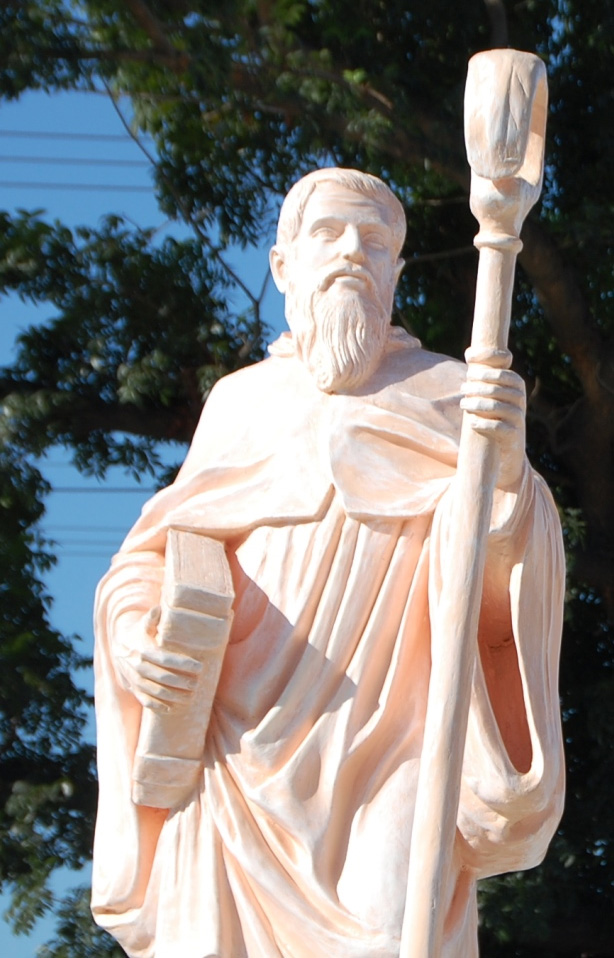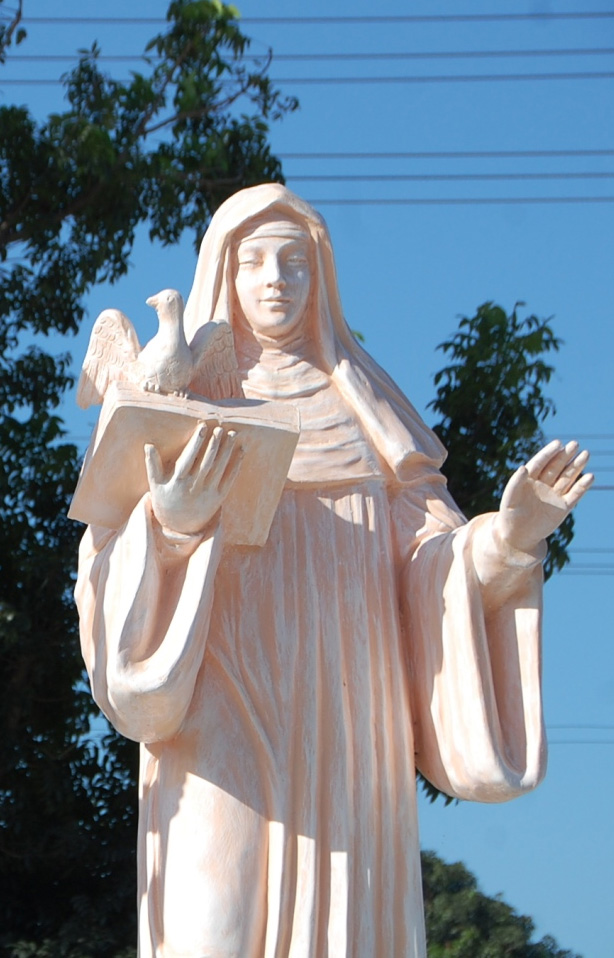Saint Benedict and Saint Scholastica
The Benedictine Spirituality is based upon the Gospel of Christ and is lived in witness to this Good News in peace and simplicity. It strives to create surroundings permeated by Christian vision and an attitude of openness to the Spirit. Benedictine education draws its inspiration and values from the Rule of St. Benedict and monastic tradition.
“Ora et Labora” is the Benedictine motto that comes from the exhortation of St. Benedict to do everything that in all things God may be glorified. Prayer and work are two important facets of life being as Scholasticans and Benedictines. We are reminded to live a life that is marked by balance of prayer and work.

SAINT BENEDICT 480 - 547
He is regarded as the “Father of Western Monasticism” and is “Co-patron of Europe” along with Saints Cyril and Methodius.
Benedict was born in the year 480 at Nursia, a village high in the mountains northeast of Rome. He came from a noble Roman family. His parents were Anicius Euproprius and Claudia Abundantia Reguardati.
As a young man, his parents sent him to Rome for classical studies but he found the life of the eternal city too degenerate for his tastes. Consequently he fled to Subiaco a place southeast of Rome where he lived as a hermit for three years tended by the monk Romanus. Benedict, was then discovered by a group of monks who prevailed upon him to become their spiritual leader. Later he moved to Monte Cassino where he established twelve monasteries with twelve monks each in the area south of Rome. It was there he wrote his Holy Rule. He died on March 21, 547.
The life of Saint Benedict is found in “The Dialogues” written by Pope St. Gregory the Great some forty years after Benedict’s death. It is not a biography as we know the genre today, but the details supply us with a basic outline of the life and times of Saint Benedict.
SAINT SCHOLASTICA 480 - 547
According to the Dialogues of Gregory the Great, Scholastica was born c. 480 in Nursia, a village high in the mountains northeast of Rome. She was Benedict’s twin sister.
She was dedicated to God from a young age. She and her brother, Benedict were brought up together until the time he left for Rome to pursue studies. Benedictine tradition holds that Scholastica established a hermitage about five miles from Monte Cassino.
The Dialogues indicates that Scholastica showed the power of prayer and love of God. When Benedict refused her request to stay longer, closing their last annual meeting, God answered her prayer with a storm which prevented him from going back to his monastery.
After three days, Benedict in his room, looking up the sky, saw the soul of Scholastica in a form of a dove and flying to the secret places of heaven.
Both of them were buried at Monte Cassino in the oratory dedicated to Saint John the Baptist. Saint Scholastica’s feast day is on February 10th and Saint Benedict’s is on March 21st and July 11th. The March date is generally considered to be the date on which he died.



